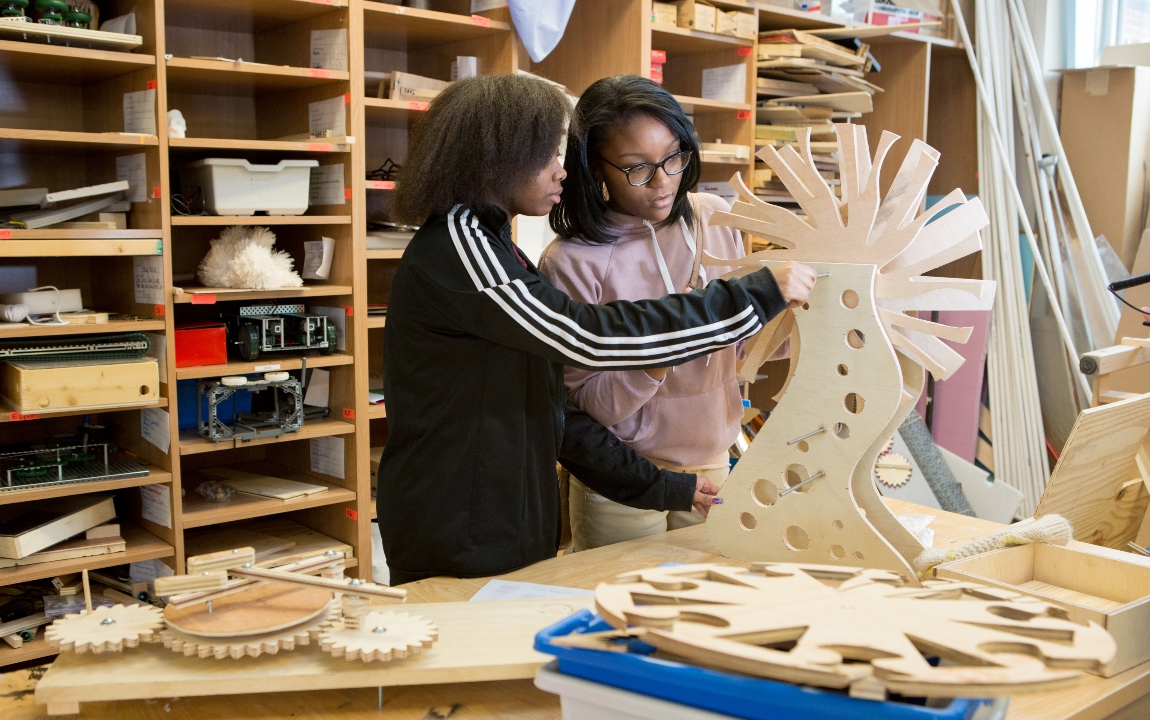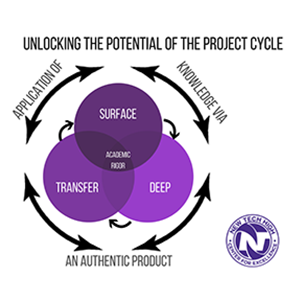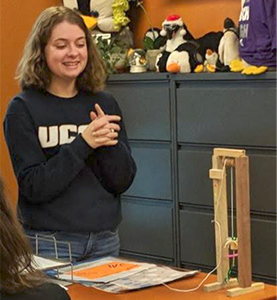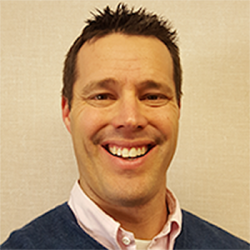 When we talk about Project Based Learning, we mean the process by which students learn the content by doing a project. Students then share their application of their core content knowledge and skills via an authentic product. By focusing on PBL as the process of learning and the application of knowledge, students become more clear on the expectations for learning outcomes, which leads to higher quality products. But if too much of the focus is on the product itself, it can be a distraction from what the true intent of the project is… the learning!
When we talk about Project Based Learning, we mean the process by which students learn the content by doing a project. Students then share their application of their core content knowledge and skills via an authentic product. By focusing on PBL as the process of learning and the application of knowledge, students become more clear on the expectations for learning outcomes, which leads to higher quality products. But if too much of the focus is on the product itself, it can be a distraction from what the true intent of the project is… the learning!
I am fortunate to work at a school that has been doing wall-to-wall PBL for the last 21 years. In all of our meetings, our conversations are around projects. How to improve them, how to make them more authentic for students, how to get more growth in student learning outcomes. We also believe in transparency. So when the nearly 1500 visitors a year who come through our school want to know “What does PBL look like when it is going on in the classroom?” we highlight the process of learning the content through the project rather than just making really nice products.
The Problem with Focusing on Products
 When we start to get into “Product” Based Learning, it can cause a drift and change the focus in student learning and the outcomes. The product can become a distraction and lead to a lack of depth in the learning, which we all strive for as educators. Then as teachers we get pulled down the path of “well if students can tell you the Driving Question then they know what they are doing.” MAYBE, they may also just be doing what I call CBL (Compliance Based Learning).
When we start to get into “Product” Based Learning, it can cause a drift and change the focus in student learning and the outcomes. The product can become a distraction and lead to a lack of depth in the learning, which we all strive for as educators. Then as teachers we get pulled down the path of “well if students can tell you the Driving Question then they know what they are doing.” MAYBE, they may also just be doing what I call CBL (Compliance Based Learning).
Take for example a junior at our school talking about her group’s project. “Not every project I have done has been successful, whether it was the way it was designed or that my team was unprepared in regards to our final product. But PBL has taught me that the most important part of any project is whether or not I learned something. If I can present my learning at the end of a project, even if I had a sub-par product, that project would be seen as successful in the eyes of both myself and my teachers. Not every project results in a spectacular product, but a project that teaches a student something, for example a skill that they will use for the rest of their life, is what I call success and is exactly what we should be striving for in PBL.”
Another example: If you’ve seen the film Most Likely to Succeed you might recall the project one boy was working on, to build a piece of a giant wooden mechanical wheel that demonstrated the students’ answer to the driving question, “Why do civilizations fail?” The boy and his group did not complete their part in time for the exhibition to a public audience. The product wasn’t complete, but they still learned a lot about world history.
Focus on the “Learning Middle”
When we as educators are clear on the distinction between the project vs. the product, then our focus, our discussions, our data is on how students are acquiring the knowledge they need to be successful in the project. Focusing on the learning process also helps dispel so many of the myths of PBL, such as, “I don’t have time for PBL because so much time is spend on developing the product that it takes away from the learning.” Or one of my favorites, “embrace the messy middle!” – but when the focus is on defining success in the project by the acquisition of knowledge, there isn’t a “messy middle.” I know as a teacher, I don’t want a messy middle, I want a learning middle!
The image at the top of this post is a graphic we created to help ensure that at each stage of learning it is connected to the transfer stage of learning. Even at the foundational knowledge level of learning, students can connect the purpose of learning to the content to the application of their knowledge via a product. At each stage of learning students can connect their learning to how they might apply their learning in an authentic way.
 Spoiler… when we focus the project as the mode of learning, then I DO have time for PBL! It also demonstrates to students that it might not matter as much whose group you are in. It brings clarity to the students to what the expectations are for the project. It also allows me as a teacher to be more flexible in grouping, provide student voice and choice, and build in opportunities to scaffold and differentiate for all the learners in the class. Focusing on the learning also helps dispel the myth that foundational knowledge and success skills need to be taught prior to the project. Students can gain the foundational knowledge in the early stage of the project, when they understand why they need the knowledge and how they are going to apply it to an authentic problem or challenge.
Spoiler… when we focus the project as the mode of learning, then I DO have time for PBL! It also demonstrates to students that it might not matter as much whose group you are in. It brings clarity to the students to what the expectations are for the project. It also allows me as a teacher to be more flexible in grouping, provide student voice and choice, and build in opportunities to scaffold and differentiate for all the learners in the class. Focusing on the learning also helps dispel the myth that foundational knowledge and success skills need to be taught prior to the project. Students can gain the foundational knowledge in the early stage of the project, when they understand why they need the knowledge and how they are going to apply it to an authentic problem or challenge.
Project Based Learning is about learning content through real world problems or contexts, and students show their learning in the application stage. If your definition of success in the project hinges on the product, or developing the product is causing a distraction from the learning, shift the focus. You could even drop the product—for example, have students just create a storyboard for a video, not the actual video. Then during the presentation phase, have students focus more on sharing their learning, their growth around content and success skills, and how what they have learned may be applied in different contexts.

